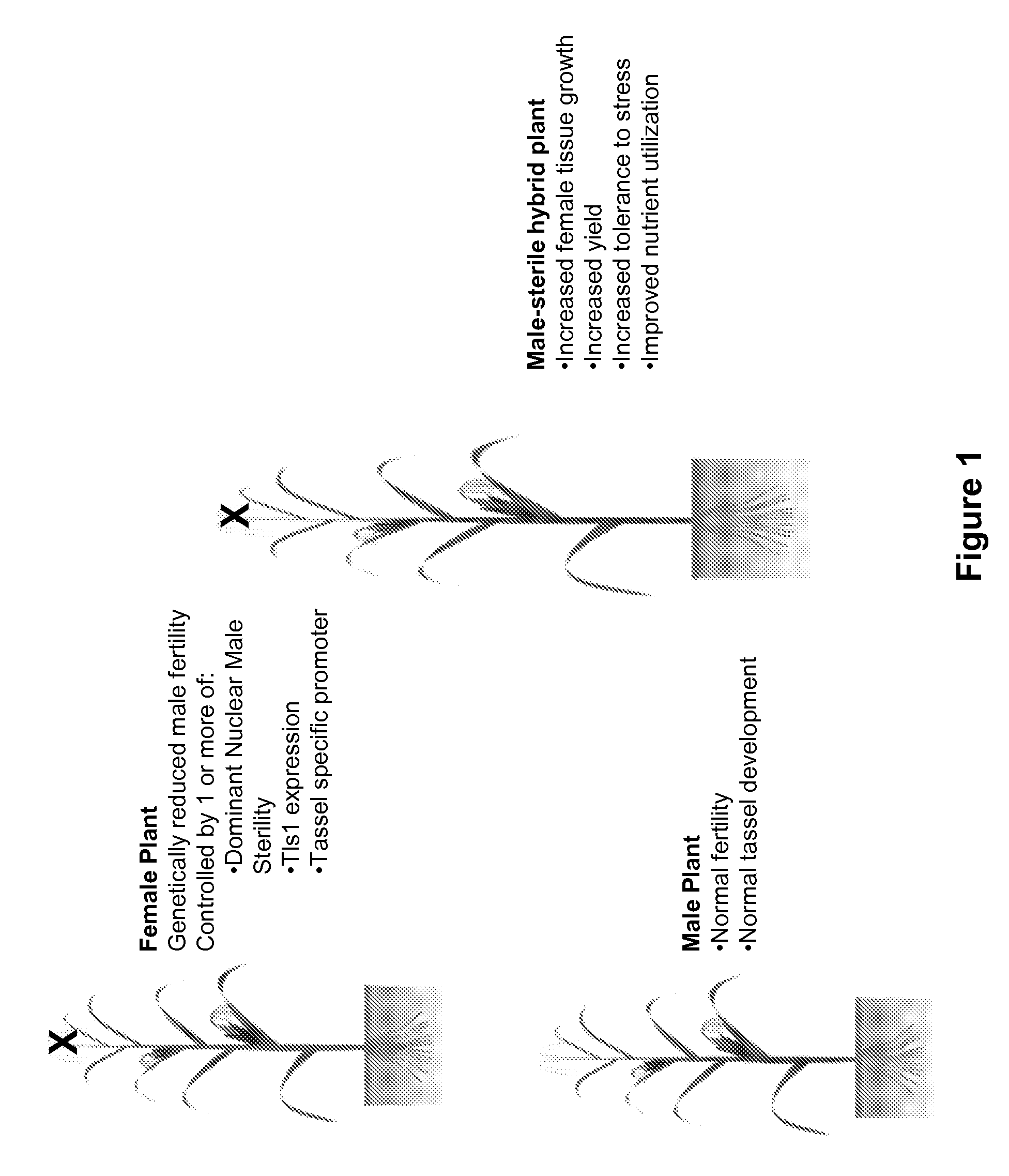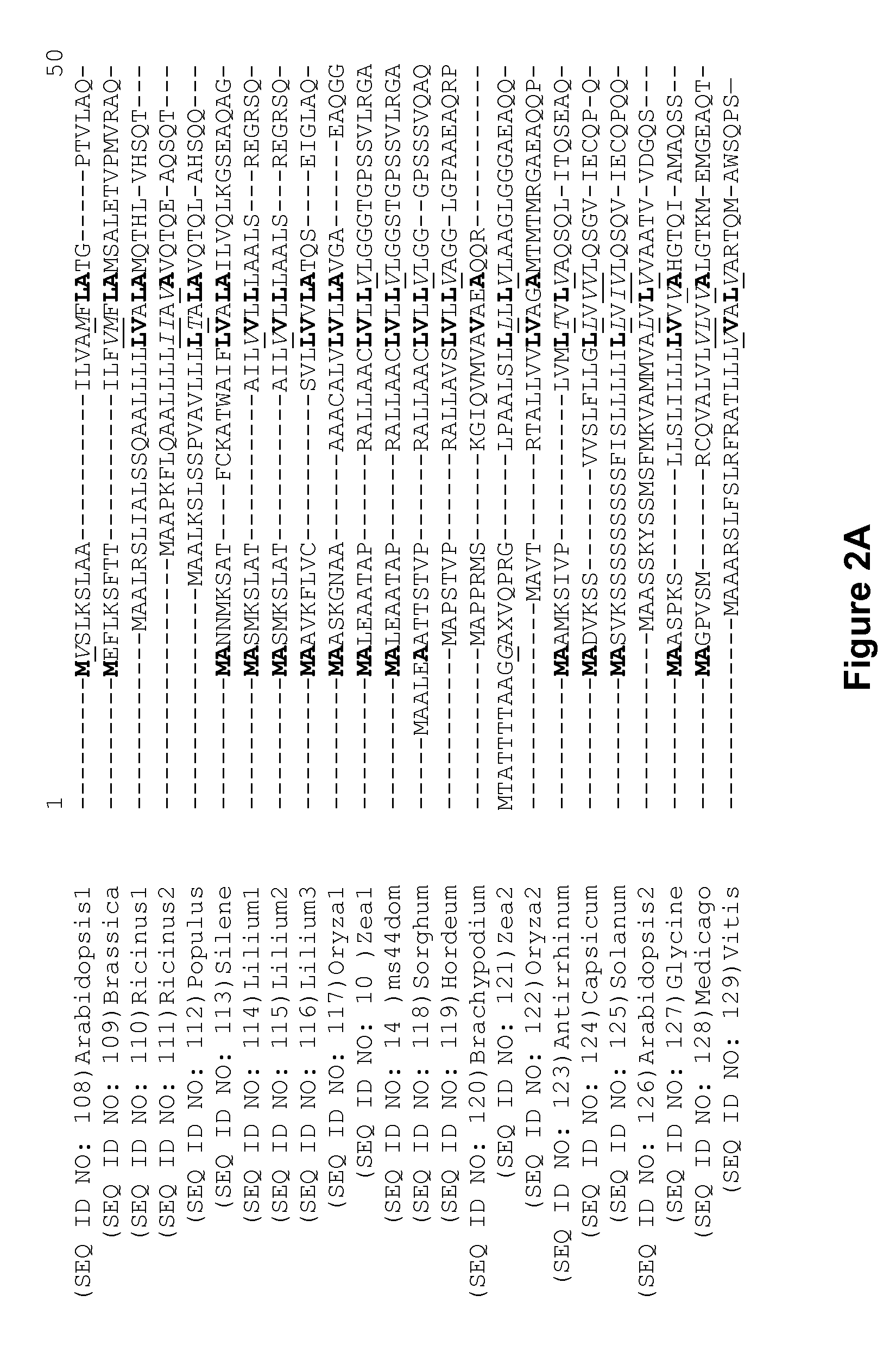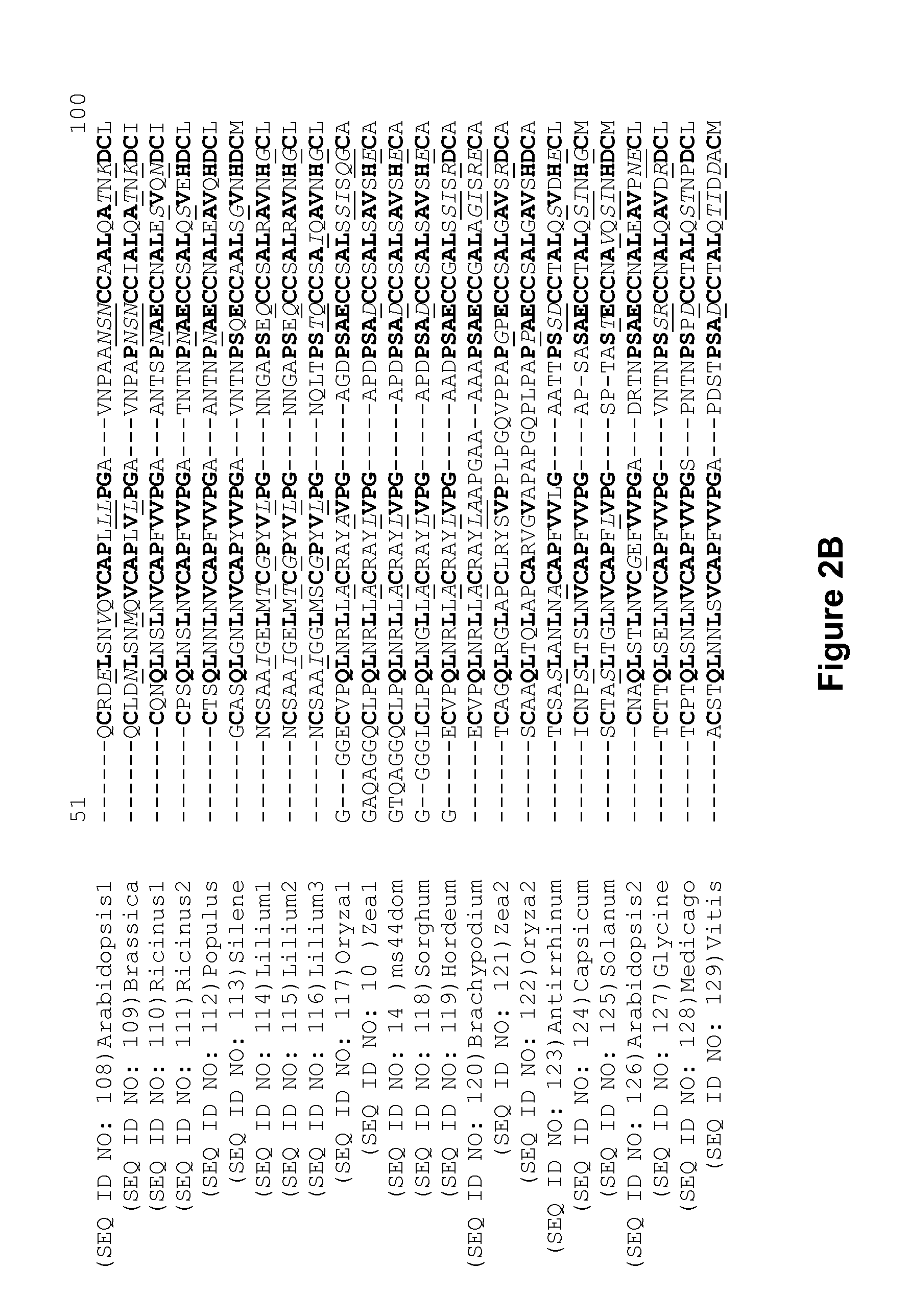Genetic reduction of male fertility in plants
a genetic reduction and plant technology, applied in the field of molecular biology, can solve problems such as the inability to properly process signal peptides, and achieve the effects of reducing male fertility, increasing yield, and maintaining yield stability in plants
- Summary
- Abstract
- Description
- Claims
- Application Information
AI Technical Summary
Benefits of technology
Problems solved by technology
Method used
Image
Examples
example 1
Ms44 Isolation and Characterization
[0336]The dominant male sterile gene, Ms44, arose through a seed based EMS mutagenesis treatment of the W23 maize line and was found to be tightly linked to the C2 locus on chromosome 4 (Linkage between Ms44 and C2, Albertsen and Trimnell, (1992). MNL 66:49). A map-based cloning approach was undertaken to identify the Ms44 gene. An initial population of 414 individuals was used to rough map Ms44 to chromosome 4. An additional population of 2686 individuals was used for fine mapping. Marker Lab genotyping narrowed the region of the mutation to a 0.43 cM interval on chromosome 4.
[0337]Additional markers were developed for fine mapping using the 39 recombinants. The Ms44 mutation was mapped to ˜80 kb region between markers made from the sequences AZM5—9212 (five recombinants) and AZM5—2221 (2 recombinants).
[0338]Primers AZM5—9212 For4 (SEQ ID NO: 1) and AZM5—9212 Rev4 (SEQ ID NO: 2) were used for an initial round of PCR followed by a second round of P...
example 2
Tassel Preferred Promoter Identification
[0348]In transgenics, one can stack a vector of tassel-preferred promoter driven negative genes, or male sterility mutants, with other vectors that enhance vegetative or ear growth. The combination of tassel reduction and enhancement of other organs can be effective in diverting nutrients to the ear to achieve yield gain.
[0349]Tassel-preferred promoters can be used to target silencing of the Tls1 gene in the tassel to knock down or knock-out the function of the gene in this tissue. This will reduce the development of tassel, while the gene function in the ear remains not significantly affected. Use of the tassel-preferred promoters is not limited to Tls1 gene, it can be applied to driving any gene expression in tassel tissues that deliver a negative effect on tissue growth, for example to affect anther, pollen, or any cells that eventually interfere male fertility. Tassel-preferred promoter candidates are identified based upon their native exp...
example 3
Tls1 Mutant Identification and Characterization
[0351]The tassel-less (tls1) mutant was described and mapped on the long arm of chromosome 1 (Albertsen, et al., (1993) Maize Genetics Newsletter 67:51-52). A small F2 population of 75 individuals, generated by crossing homozygous tls1 plants (background unknown) to Mo17, was genotyped to confirm the previously identified tls1 position. The mutation was found to be located between two SNP markers, MZA5484-22 and MZA10765-46. These markers were used to screen for recombinants in a larger F2 population of 2985 individuals. All the recombinants were selected for self-pollination and 177 F3 ears were harvested. 177 F3 families were grown in rows in the field. Phenotypes for all the individuals in rows were taken to determine each F2 line as homozygous wild-type, heterozygous or homozygous tls1. Leaf punches from 8 individuals of each F3 family were pooled together for genotyping. Using these lines, tls1 was confirmed to be between markers M...
PUM
| Property | Measurement | Unit |
|---|---|---|
| Fraction | aaaaa | aaaaa |
| Electrical resistance | aaaaa | aaaaa |
| Efficiency | aaaaa | aaaaa |
Abstract
Description
Claims
Application Information
 Login to View More
Login to View More - R&D
- Intellectual Property
- Life Sciences
- Materials
- Tech Scout
- Unparalleled Data Quality
- Higher Quality Content
- 60% Fewer Hallucinations
Browse by: Latest US Patents, China's latest patents, Technical Efficacy Thesaurus, Application Domain, Technology Topic, Popular Technical Reports.
© 2025 PatSnap. All rights reserved.Legal|Privacy policy|Modern Slavery Act Transparency Statement|Sitemap|About US| Contact US: help@patsnap.com



